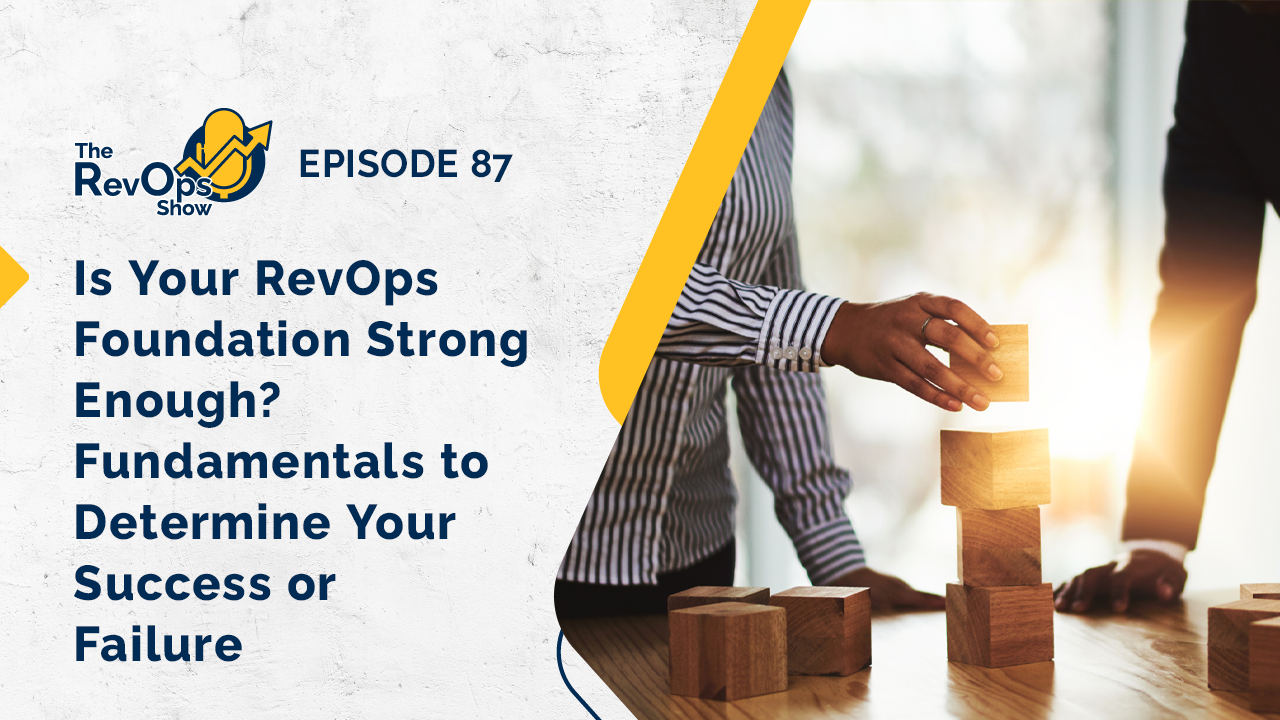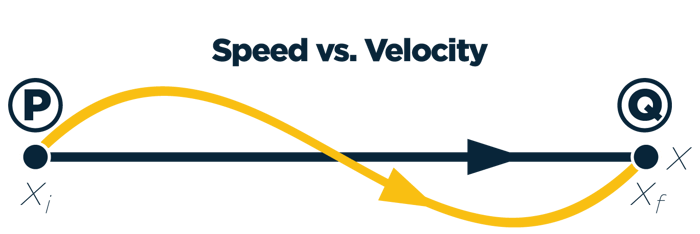Let’s come back to the basics and discuss the fundamentals of RevOps that are important for success. On the flip side, let’s discuss what happens when we drop or skip over the fundamentals.
Audio:
Video:

Additional Resources:
- [Blog] Sisyphus vs. The Flywheel: 5 Tips to Eliminate Friction
- [Blog] Aligning Vectors & Structuring Your Team For Revenue Growth
- [RevOps Show] Episode 77: Always Be Launching - The Key to CRM Success
Show Notes:
Pre-Show Banter:
- Even though Jess did do theater production they did not count down before starting.
- Doug and Jess somehow end up recording on Friday mornings when they set not to.
- The Wildcats broke Jess’s heart again.
- Doug received the layout of The Revenue Acceleration Framework book that will be coming out on May 21st!
As Jess was researching, she found a lot of things were being contributed to the fundamentals of RevOps: people, tech stack, strategy, and more. Those don’t seem like fundamentals.
Fundamental: central or primary rule or principle on which something is based
From ChatGPT: The fundamentals can refer to foundational principles. The foundational principles or basics of a particular subject are often used in the context of finance, business, or other disciplines. In finance, for example, fundamentals may include concepts like revenue, expenses, profit margins, and cash flow. In business, fundamentals might encompass areas like customer acquisition, product development, and operational efficiency.
Note: don’t take everything ChatGPT says at face value
What defines the fundamentals in whatever discipline that you’re talking about are the first principles. Where you start is by looking at and understanding the first principles. Don’t confuse these with fundamentals. The first principles help you define what fundamentals are.
First Principles
Prime Directive
At Lift we believe in the prime directive - the business process must drive the technology. The technology should never dictate the business process (i.e. business motion).
The goal of the process is to provide the constraints so that you can achieve your ultimate outcomes.
The Inverse Friction Principle

What we do seems complex and it is by design. We’re building everything into the system so your users aren’t having to manage or carry the heavy lift. The ease or effortlessness has an inverse relationship to the complexity that went into the design.
Frameworks
For Lift, the framework is The Revenue Acceleration Framework (available May 21st! Stay tuned for more info.) The framework has to be the framework, not applying some pieces of one framework and some from another.
Fundamentals
These are the key fundamentals that we’ve found to be major drives of the difference between success and failure.
Slow Down to Speed Up
The human brain adds. It doesn’t subtract naturally. We’re addicted to doing more. The more you’re seeing, the more you need to slow down. The goal is not great CRM. The goal is not functionality. The goal is more throughput.
Speed is a measurement of how fast you’re going. Velocity is that speed applied to a vector - to a destination. Velocity is how long it takes you to get there and how much progress you’re making.

Slow the game down. Stop making everything so frantic.
Friction
If you’re going to use the word friction, know what it means. There’s bad and good friction. You want to have friction to slow the game down. The most underused tool in the tool belt is friction. You want to avoid sludge - that’s bad friction.
Structure, Strategy, Execution
While execution eats up a lot of the room and strategy eats up the rest, what drives scalability is structure. If you don’t have a structure in place, you can’t have a strategy.
Solve for Jobs to be Done; Solve for the Real Problem
Jobs to be done has become a buzzword. When you ask the question, what’s the real problem we’re solving here? If you have an answer to that question more than 80% of the time, that’s when warning lights turn on. The real answer more often than not is “I don’t know.”
Alignment
When you align vectors, you’re trying to pull everyone in the right direction. Alignment is not having everything in a straight line; it’s alignment to where we’re going.
Many people hear alignment and think everything has to be clean and we’ll hold hands and sing kumbaya. Alignment has friction to it.
Acceleration Cycles
This is the process of always be launching. The ideal acceleration cycle is 90 days. There’s a beginning, a middle, and an end. This is key to maintaining velocity and having constant movement.
When you’re not mastering the fundamentals you end up building processes and systems that have a fine line between responsiveness and anarchy. You’re always on the cusp of chaos. It’s easy to get away from the fundamentals, but we shouldn’t. Focus on the fundamentals and you’ll be on the path to success.
Next Steps:
-
Follow Jess, Doug & Lift on socials for updates on the show or other insights:
-
Subscribe to the show on Spotify & Apple Podcasts
-
Check out Let's Play RevOps on Twitch for more commentary on this topic
-
Listen to Episode 88: 5 Priorities to Strengthen Sales Manager's Performance
